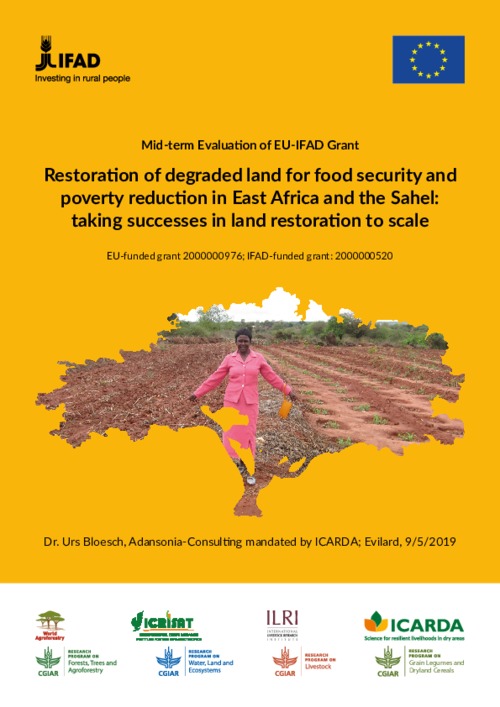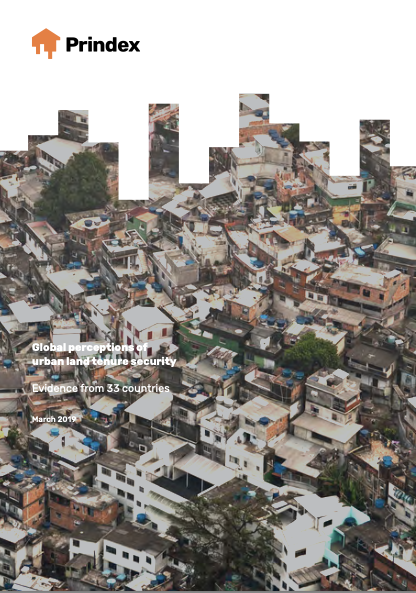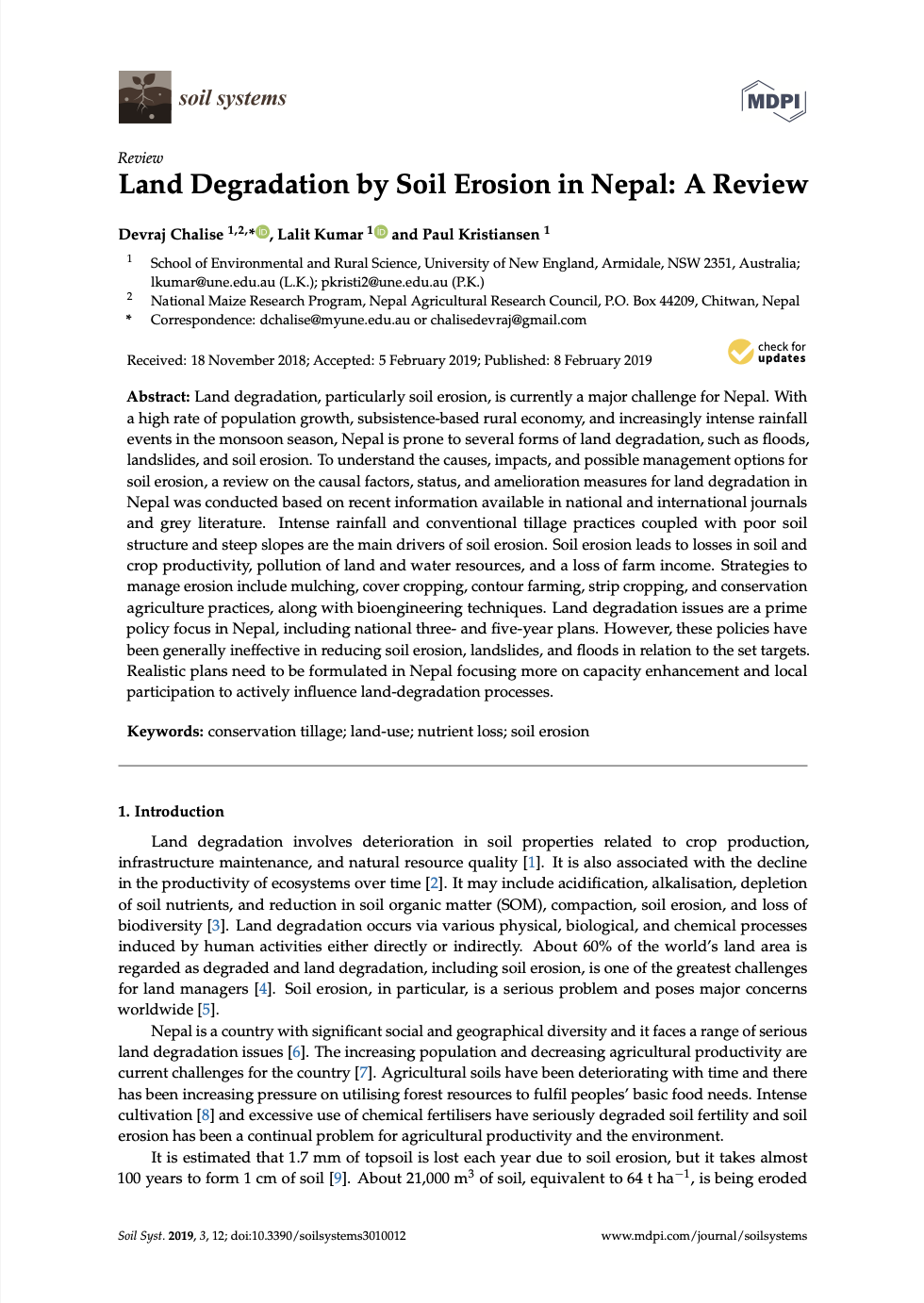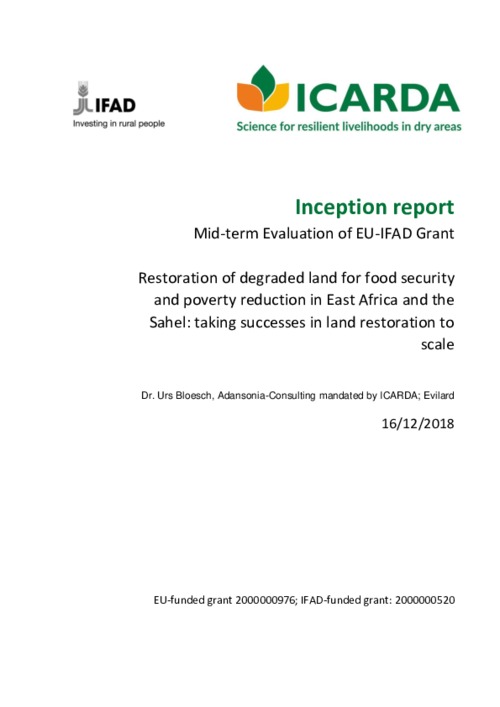Mid-term Evaluation Final Report: Restoration of degraded land for food security and poverty reduction in East Africa and the Sahel: taking successes in land restoration to scale
The final report of Mid-term evaluation of EU-IFAD Grant project "Restoration of degraded land for food security and poverty reduction in East Africa and the Sahel: taking successes in land restoration to scale".







